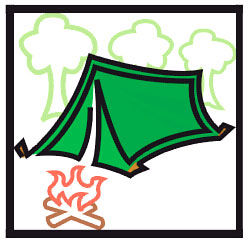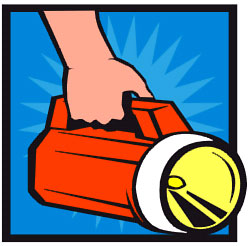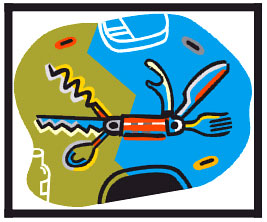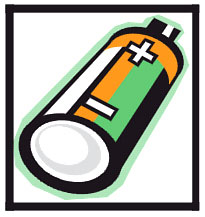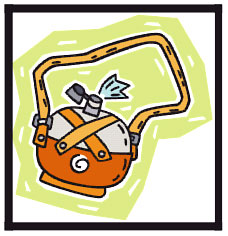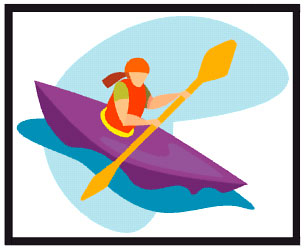Estimate these
This task is about estimation with addition and multiplication.
In each box below clearly show how you worked out your best estimate.
| a) | Card A: Estimate the total cost of 1 first aid kit, 1 store tent, and 1 torch. Estimate, do not do an exact calculation. | |
|
||
|
b) |
Card B: Estimate the total cost of 40 tins of tomatoes and 20 loaves of bread. Estimate, do not do an exact calculation. |
|
|
||
|
c) |
Card C: Estimate the total cost of 3 utensil sets, 8 batteries, 2 water bottles, and 5 gas cookers. Estimate, do not do an exact calculation. |
|
|
||
|
d) |
Card D: Estimate how much it cost each of the 9 people for the kayaking lesson, assuming they all paid the same amount. Estimate, do not do an exact calculation. |
|
|
||
|
e) |
Card E: Energy bars come in boxes of 48. Each bar costs $2.05. Estimate how much each person pays if the cost is equally shared between 18 people. Estimate, do not do an exact calculation. |
|
|
|
Card A Estimate the total cost of one first aid kit, one store tent and one torch. $205.23 $37.65 $13.95 |
Card B Estimate the total cost of 40 tins of tomatoes and 20 loaves of bread. 97 cents each $1.52 each |
|
Card C Estimate the total cost of 3 utensil sets, 8 batteries, 2 water bottles and 5 gas cookers. $10.54 each $1.53 each $23.85 each $19.25 each |
Card D The kayaking lesson came to a total of $425 for 9 people. Estimate how much it cost each person for the lesson, assuming they all paid the same amount. |
|
Card E Energy bars come in boxes of 48. Each bar costs $2.05. Estimate how much each person pays if the cost is equally shared between 18 people. $2.05 each |



